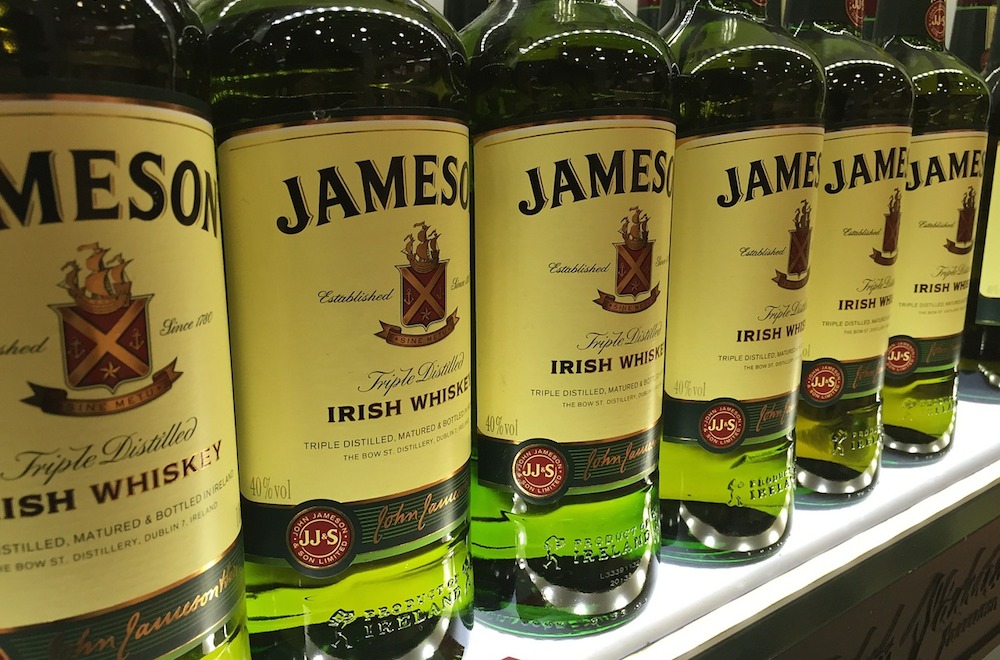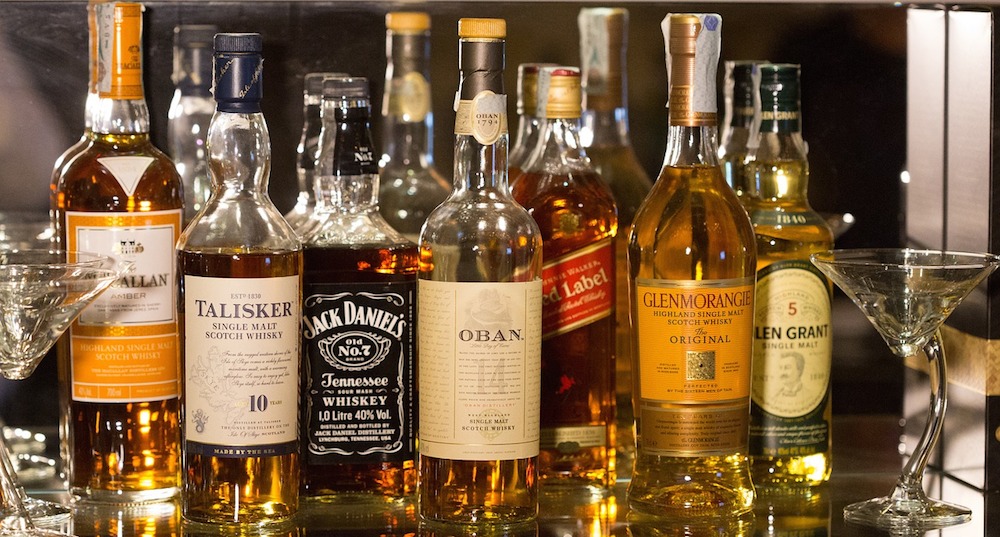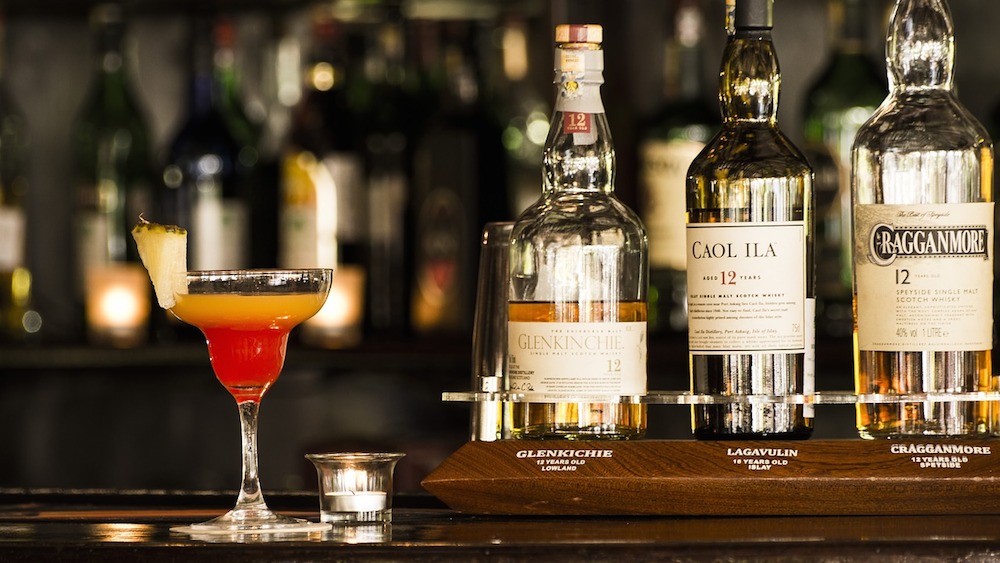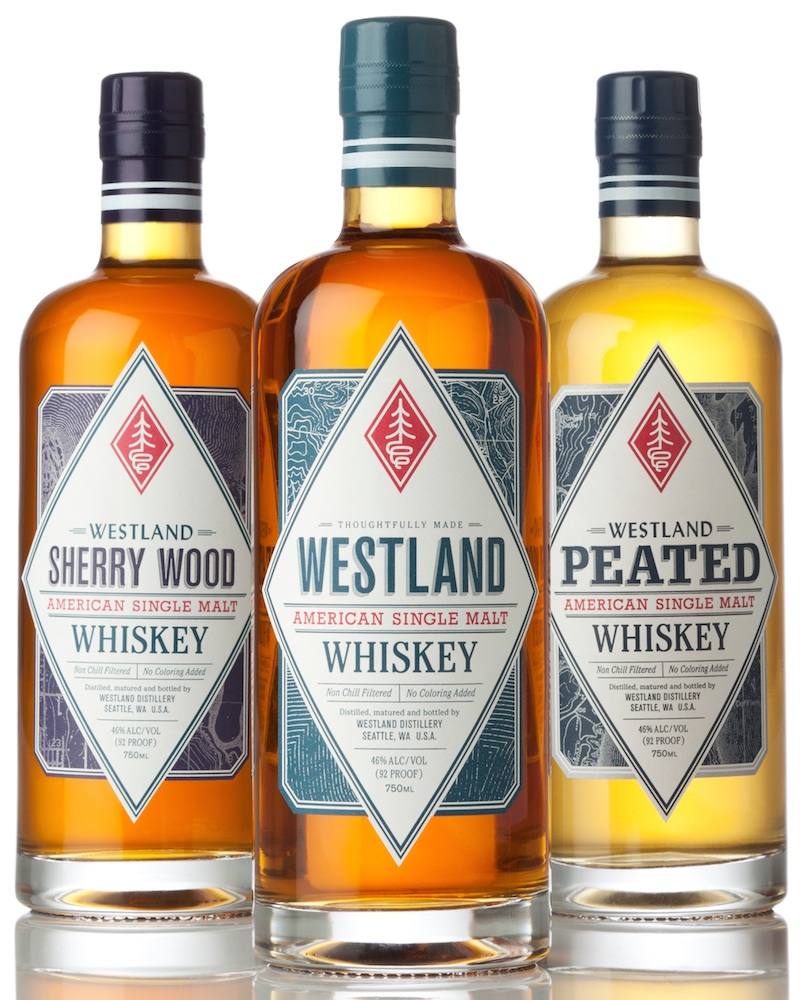What trends will drive whiskey in 2017? The brown-spirits boom shows little sign of decline, so this year will likely be defined by further growth.
After all, increasing numbers of people are gaining interest in whiskey. Brands have responded by launching new and innovative offerings. Not since the last boom in the ‘70s has the market been so big and diverse.
So as we enter 2017 amidst another golden age of whiskey, here are 7 key trends to watch (all numbers below come from the 2016 Liquor Handbook, put together by our research partner, The Beverage Information Group):
1) Irish Whiskey Remains Hot — And Diversifies
What’s hotter than Irish whiskey in spirits?
Answer: nothing.
The category grew 12.9% in 2015 to 2.98 million cases 9-liter cases (“cases” from hereon out refers to 9-liter cases). The category has now posted double-digit growth for 12 straight years. It’s projected for another 12.7% in growth in 2016, up to 3.35 million cases. And since 1990, Irish whiskey has been the fastest growing spirit in the world in terms of percentage gains.
This growth can likely be attributed to three things. First, Irish whiskey boasts a strong cultural heritage, which appeals to drinkers in the modern craft movement. Also, this spirit is among the sweetest-tasting type of whiskey, which appeals to the broader American palate — especially Millennials and women.
And lastly, this category continues to be propped up by its dominant brand. Jameson grew 15.8% in 2015 while representing a whopping 88% of Irish whiskey sales in America.
Jameson will remain strong moving forward, of course. But look for the overall category to diversify. Currently there are 13 operational distilleries in Ireland. Most were opened in the past 10 years. Meaning they are either just now releasing product or are still aging it before bottling. And about 20 more new distilleries are somewhere along the process of opening.
Newer distilleries that are already releasing product have added more flavors and styles into the category. For instance, West Cork Distillers, founded in 2003, recently released an array of Irish whiskeys: single malt, bourbon cask-aged, double-charred, cask strength, and different finishes in port, rum or sherry. The brand is also experimenting with different source fuels and barrel charrings.
This growing category is rapidly evolving.

2) Blended Whiskey Gets Even Bigger
We’ve been saying this for a while now, but it bears repeating. The term “blended” printed on a label no longer sends customers looking for another bottle. There was a time when the emphasis on age statements, especially for Scotch, made many whiskey drinkers think that “blended” was synonymous for “cheap” and “inferior.”
Not anymore. Sales in the blended whiskey category in America grew 6% in 2015 to 5.2 million cases. These sales are projected to grow another 6.3% in 2016 to 5.53 million cases.
When people now read “blended,” they’re more apt to think of two positives: “flavorful” and “affordable.”
To the former, many brands have begun creating unique flavors with unusual mixtures. High West comes to mind, for its popular and high-end blends. These are no classically flavored whiskeys but hybrids of what people have come to expect. Like their Campfire, which combines Scotch, bourbon and rye whiskeys.
With modern consumers most thirsty for whatever’s newest to them, expect more brands to embrace blends in 2017 as a source of fresh and different flavors.
That extends into Scotch and malts as well. Blends offer cost-conscious consumers a way into this category without breaking the bank. As the cost for malts with age-statements continue to rise, more consumers may look to blends as an affordable alternative.
3) Age Statements Continue To Vanish
Along those lines, 2017 will likely see fewer releases with age statements.
On one hand is what we just mentioned about blended whiskey becoming a more legitimate category. Another big factor is diminishing stocks. Especially for Scotch brands, distillers simply do not have the liquid to keep up with the enormous demand.
As a result, many high-end Scotch producers — like The Macallan and Highland Park — have released new blended products like The Macallan Rare Cask and Highland Park Dark Origins, mixing together what whisky they have to expand their lines at a time when product is flying off the shelves.
Does the consumer care? The growth of blended whiskey would imply “no.” The blended category is more accessible, after all. And a whole new generation of drinkers (read: Millennials) has gotten into brown spirits at a time when age statements are no longer valued as significantly. It may be that younger drinkers never come to think much about age statements the way that older generations prize these numbers printed on labels.

4) Bourbon And Scotch Enjoy The Good Times
For all the smaller categories expanding during this brown-spirits craze, let’s not forget what’s really fueling the boom.
When most consumers think of whiskey they think of bourbon or Scotch. Bottles in both categories are hard to keep on shelves even as they rise dramatically in price.
Scotch grew 5.1% in 2015 to 9.1 million cases sold in America, and is projected for another 5.5% growth in 2016 to 9.65 million cases.
Bourbon is even bigger. Here we’re looking at numbers for the broad category of “straight American whiskey,” which grew 4.9% in 2015 to 19.67 million cases. Our projections have the category expanding another 5.3% in 2016 to an incredible 20.72 million cases.
Look for the consumer excitement for these categories to climb further. Scotch and bourbon remain extremely popular among newbies and connoisseurs alike. Both spirits are something knowledgeable consumers can savor and act as an easy starting-off point for the person just now getting into brown spirits.
The downside to this? Companies will undoubtedly continue to escalate prices on their Scotch and bourbon products.

5) American Single Malt Steps Up
Sales numbers are not easily available for American Single Malt because it’s technically not yet a recognized category. But a growing number of American distillers are trying to change that.
American Single Malt operages a lot like American craft beer. It eagerly bucks centuries of traditions that have defined similar categories overseas. Rather than play by the rules of Scotch — particularly in the use of the same old malts, yeasts, and production/aging techniques — American Single Malt has embraced experimentation.

As a result the category is currently producing flavors unlike much else on the market. Like a distinctively smoky single malt made from mesquite-kilned malted barley by Santa Fe Spirits. Or whiskey that uses peat sourced locally from Washington bogs by Westland Distillery.
These are not your grandpa’s single malts. Like a West Coast IPA or bourbon-barrel aged stout, these are entirely unique, American takes on an existing style. Perhaps more so than any other U.S. spirits category right now, American Single Malt is driven by creativity.
The rise of American single malt comes at an opportune time for producers. As U.S. consumers continue to crave new flavors, here is a young, different, burgeoning category that people can explore. And look for the category to possibly become federally recognized in 2017 thanks to ongoing efforts with the TTB from the American Single Malt Whiskey Commission.
6) Mash Bills Get Creative
This is more of a corollary to trend #1 above, but we wanted to separate it out for emphasis. As the American consumer becomes more comfortable with the idea of blended whiskeys being premium in quality, then distillers in turn will produce more-creative blends.
For example, Cooperstown Distillery in New York. In a Q&A printed in the forthcoming magazine issue of Beverage Dynamics, company founder Gene Marra talks about experimenting with oats in his mash bills. A sample whiskey sent to our offices displayed the notable creaminess and flavors possible through this technique, including wonderful flavors of crème brûlée, burnt caramel, clove, allspice and more-obscure tertiary notes.
“We think that oats are the answer to why our bourbon is so great,” Marra told Beverage Dynamics. “We love the complexity and added creamy dimensions that the oats impart.”
With the market for whiskey growing ever more competitive, and consumers eager to explore fresh flavors, expect more experimentation out of distillers like Marra.
7) Flavored Whiskey Is Legit
They may not be the stuff of connoisseurship, but flavored whiskeys continue to sell very well at retail.
Yes, Fireball is for real. The brand grew 12.3% in sales in 2015, totaling 4.375 million cases. (For reference, that’s nearly twice as much as Jägermeister, which is arguably aimed at the same consumer demo.) As recently as 2010 Fireball moved only 125,000 cases. Appealing to young drinkers, this is a brand on the fast track. Its gains in 2016 are certain to be impressive as well.
Honey-flavored whiskeys have performed decently in recent years. But expect to see the big players sticking mostly with the cinnamon craze set off by Fireball. And for what it’s worth, there’s no denying that flavored whiskeys work well in craft cocktails. There’s something for everyone in brown spirits, which will enjoy another robust year in 2017.
Correction: An earlier version of this article listed the founding year of West Cork Distillers as 2008. West Cork Distillers was actually founded in 2003.
Kyle Swartz is managing editor of Beverage Dynamics Magazine. Reach him at kswartz@epgmediallc.com Read his recent piece on 6 Craft Beer Stats To Watch In 2017.










